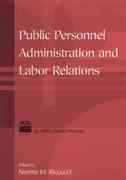Question
Brian is about to take early retirement at the age of 45. His current wealth is $2 million and he plans to use this wealth
Brian is about to take early retirement at the age of 45. His current wealth is $2 million and he plans to use this wealth to fund his consumption over the remaining three periods of his life.1 Any money that he does not spend on consumption in period 0 can be put in the bank where it will earn interest at the rate of 100% per period. That is, r = 1, so if chooses not to consume an amount s of his $2 million in period 0 he will have s (1 + r) = 2s available at the beginning of period 1. Similarly, any money he does not spend on consumption in period 1 can be put in the bank where it will also earn interest at the rate of r = 1.
Initially suppose that Brian's choices over consumption streams are governed by an exponential discounted utility family of preference relations, characterized by an "instantaneous" utility function u (c) = 2c c 2/2 and a discount factor = 1/2.
Utilizing the fact that his marginal utility of consumption mu (c) = 2 c, show that in period 0 his optimal consumption plan (measured in millions of dollars) is (c 0 , c 1 , c 2 ) = 8/7 , 8/7 , 8/7
Step by Step Solution
There are 3 Steps involved in it
Step: 1

Get Instant Access to Expert-Tailored Solutions
See step-by-step solutions with expert insights and AI powered tools for academic success
Step: 2

Step: 3

Ace Your Homework with AI
Get the answers you need in no time with our AI-driven, step-by-step assistance
Get Started


